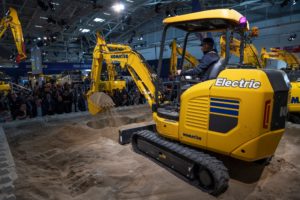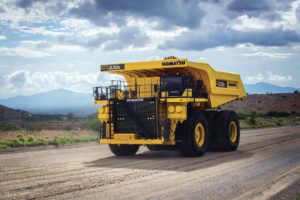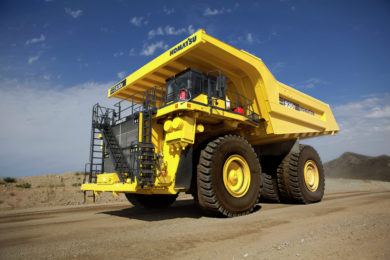A recent article in Japan’s financial newspaper The Nikkei saw much interest with the revelation that Komatsu is embarking on a hydrogen mining truck development program in 2021 and aims to have the trucks ready for practical use by 2030. But in reality, hydrogen is only part of the story as the major mining houses look to a decarbonised future where battery electric, hydrogen fuel cell, battery-fuel cell hybrid (FCEV), trolley assist and the latest ultra low emissions engines will all be part of the mix for mining trucks. Paul Moore, IM Editorial Director, spoke to Masayuki Moriyama, President of Komatsu Ltd’s Mining Business Division, to get some understanding of how Komatsu is planning for the next phase of mining equipment development

IM: How is Komatsu looking to the future for its mining equipment offering as the mining sector aims for a decarbonised future?
MM: Komatsu has set a management target of reducing CO2 emissions from our products by 50% by 2030, and a challenge target of achieving carbon neutrality by 2050. Considering that electrification must be progressed in order to achieve this goal, we are considering various realisation methods for each equipment model/class and region. We have already made some progress – in mini excavators, the PC30E-5 with lead-acid battery was introduced as a rental equipment option in the domestic Japanese market in April 2020. The next generation model, a lithium-ion battery-powered electric mini excavator is scheduled for mass production in 2022. From 2023 to 2024, we are targeting to start mass-production of electric hydraulic excavators in the small and medium-sized class. Regarding mining dump trucks, we will proceed with the development of “power agnostic” dump trucks that can operate with a variety of power sources – such as engines, batteries, trolley systems and hydrogen fuel cells – by 2030.

IM: Are you looking at particular truck sizes for this, are hybrids like FCEV trucks a consideration and where will the new trucks be developed and tested?
MM: We are focused on the development of a family of trucks that leverage a variety of power sources, not a specific model. The order of introduction will depend on the market need. The technologies to support our new approach continue to evolve, so it remains to be seen exactly what the final solution will be. When we look at the potential options that may be required to meet the demanding needs of the construction and mining markets it is clear that in some cases these technologies could be combined to add more value to our customers’ operations. Development will leverage our global resources through collaboration between our teams in Japan and the United States, the latter of which is our development base for ultra-large dump trucks. We have not decided on the testing location yet.
IM: Is it linked to any active mining customer reduced emissions targets?
MM: Recognising that many mining companies have set greenhouse gas reduction targets, Komatsu is taking the initiative with our own programs to align with our customers’ strategic directions. This is one of our management goals for the realisation of a decarbonised society.











